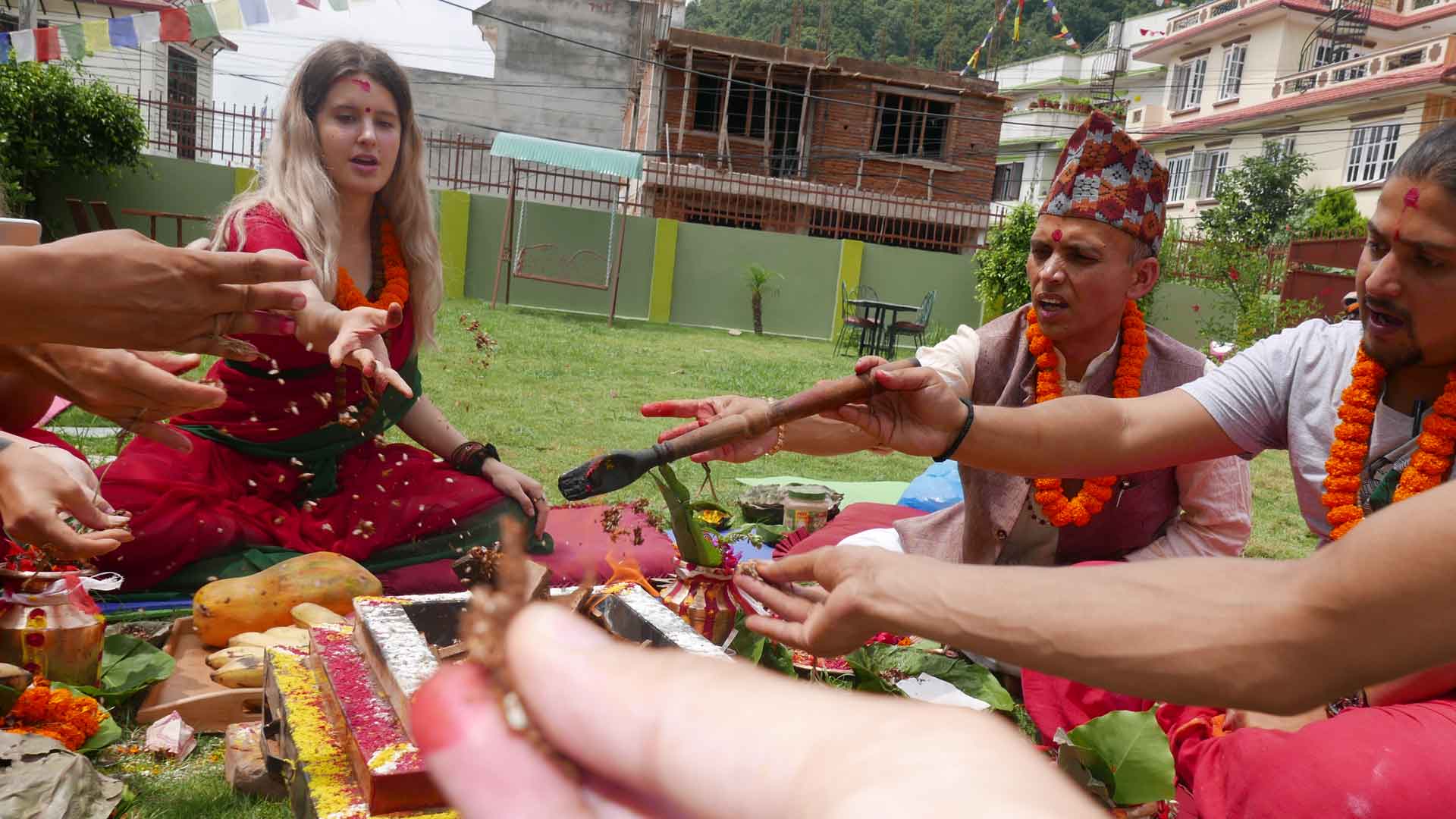
13 Oct 2020 HYN Himalayan Yoga Academy
Here is a continuity PART II YOGA TRADITION, DIVINE KNOWLEDGE AND CULTIVATION to provide you with insights in detail, including popular philosophies.
SHRIMAD BHAGAVAD GITA- श्रीमद् भगवत गीता
“Tam vidhyaad dukha sanyogaviyogam Yogasangyeetam! Sa nishchayena Yoktavyo Yogo’nirvinnachetasaa !!6/23; “तं विद्याद् दुखसंयोगवियोगं योगसंज्ञितम्। स निश्चयेन योक्तव्यो योगो? निर्विण्णचेतसा।। ६। / २३; In which the coincidence of sorrow is detachment, that is Yoga Samadhi. That yoga, which is the goal of Dhyana Yoga, must be practiced from the mind.
“Yogasthah Kuru Karmani sanga tyaktvaa Dhananjaya; Siddhayasiddhyoh Samo bhootva samatvam yoga uchyate. 2-48 “Gita- ” योगस्थ: कुरू कर्माणि सङ्ग त्यक्त्वा धनन्जय! सिद्धयसिद्ध्यो: समो भूत्वा समत्वम योग उच्यते।। २ -४८ ” गीता; O Arjuna! Forsake successful and unsuccessful attachments and do your duty in possibility, this possibility is called yoga.
SANKHYA PHILOSOPHY: THE DISTINCTION OF PRAKRITI-PURUSHA- सांख्य दर्शन : प्रक्र्ति, -पुरुष को भेद
“Gyananmuktih” S. D. 3/23, “ज्ञानान्मुक्त्ति:’ स। द। ३ / २३।।; It is said that there will be liberation from knowledge, in which the means of knowledge are mentioned as restraint, asana, perception, meditation, practice, asceticism, etc. Its active use is found in yoga philosophy. “Bandho viparyayat” “बंधो विपर्ययात” viparyaya means lack of self-knowledge, and due to ignorance, the living soul is bound from birth to death.
JUSTICE, VAISHESHIKA, VEDANTA PHILOSOPHY- न्याय, वैशेषिक, वेदान्त दर्शन
Philosophy of justice (न्याय): 4. 2. 46. It is said that for the attainment of Samadhi, by following the rules of Yama, etc., the Ragadi defect should be destroyed and the soul should be made purely cultured, and the measures mentioned in Yoga Shastra should be followed.
Vaisheshika (वैशेषिक) Darshan: Nirvana (salvation) is obtained from the elemental knowledge produced by a particular religion.
Vedanta (वेदान्त) philosophy: Asana, pranayama, concentration, meditation, etc. are described as compound actions for ‘mindfulness control’.
PATANJALI IN VEDIC YOGA TRADITION- वैदिक योग परम्परामा पतंजलि
From the Vedic Samhita to the Brahman, Aranyaka, and Upanishads, the harmonization and summarization of the compound elements available has been formulated by Maharishi Patanjali in Yoga philosophy. Author of Yoga Sutras, Grammar Mahabhasya, Nidan Sutras, Sankhyacharya, Ayurveda Spokesperson, and Lohshastrakar.
Yoga Sutra is the oldest philosophy, about 300/700/1000/8000 B.C., with different vows. It is also believed to be about 10,000 years old. There are 4 Chapters 195 Sutras in yoga darshan. “tadā draṣṭuḥ svarūpe-‘vasthānam” ॥1. 3॥ तदा द्रष्टुः स्वरूपेऽवस्थानम् ॥३॥ -For finding our true self (drashtu) entails insight into our nature. When the complex and intricate instincts of the mind are restrained, then the seer is situated in his real form or Brahmasvarupa.
BUDDHIST PHILOSOPHY, ATHEISTIC PHILOSOPHY- बौद्ध दर्शन नास्तिक दर्शन
Buddhist philosophy does not believe in Vedic knowledge but believes in salvation, the word Nirvana. The sadhana path for Nirvana is in line with the yoga form. Yoga philosophy considers worldly life to be miserable, while Buddha’s philosophy has the same principle. Both philosophies believe in the end of the cycle of life and death for salvation. It is said that the philosophy of numbers and yoga has evolved into a functional form of Buddhist philosophy.
BUDDHIST PHILOSOPHY – YOGA PHILOSOPHY AND SADHANA- बौद्ध दर्शन -योग दर्शन र साधना
Mahatma Buddha practiced asceticism, and in yoga tradition philosophy asceticism is the main practice. In the Buddha’s philosophy, the Ashtanga path and the Ashtanga yoga of yoga correspond. The five sub-rules of Buddha’s Panchsheel and Ashtanga Yoga’s Yama correspond.
The Eightfold Path in Buddha’s Philosophy is Right Sight, Right Resolution, Speech, Karma, Life, Exercise, Right Memory, and Samadhi. Ashtanga Yoga in Yoga Philosophy are Yama, Niyama, Asana, Pranayama, Pratyahara, Dharana, Dhyana and Samadhi. Asana and Pranayama are also discussed in Buddha’s philosophy. For example, Buddha used to meditate with Padmasana and practice Anapan Sati Pranayama.
SHIVA SAMHITA OR SHIVA’S ABBREVIATED TEXT-शिव संहिता वा शिवको संक्षेप ग्रन्थ
Yoga is an old unknown Sanskrit text in the practice and art. This is one of the classical yogic sciences. The word “yoga” means the union of the human soul and the divine. This talk includes detailed instructions on how to practice the various elements of yoga asanas, postures, pranayamas, meditation, tantric practices, and abstract yogic philosophy.
SHIVA SAMHITA- शिव संहिता
“Yasmin jnate sarvamidam jnatam bhavati nischitam; tasminparishramah kaaryah kimanyaachchhaastra- bhaashit. 1.18; “यस्मीन ज्ञाते सर्वमिदम ज्ञातम भवति निश्चितम। तस्मिन्परिश्रम: कार्य: किमन्याच्छास्त्र-भाशित।।१। १८।।. With the knowledge of Yoga, the knowledge of the whole is definitely obtained, but effort must be made. More than 350,000 nadis, (Varina, Sushumna and Asi), 4 major out of 84 asanas, ten mudras, Practices of meditation, such as: Pratikopasana (God or Spirit in the sky), Jyoti Roop Atma, Naad Brahma, Niranjan’s, Kantha Koop (Khechari), Trinetra’s; Chakra Dhyana Yoga, Paramsunya’s Dhyana, Nirvichara Dhyana are mentioned.
Chaturvidha Yoga are Mantra, Hatha, Laya, Raj Yoga. “Raja Yoga without Hatham, Raja Yoga without Hatha:. “Hatham Vina raajayogo raajayogam vina Hathah, tasmaatpravaartaate Yogi hathe satgurumaargatah.” – “हठम विना राजयोगो राजयोगम विना हठ:। तस्मात्प्रवार्ताते योगी हठे सत्गुरुमार्गत: Without Hatha Yoga, Raja Yoga and without Raj Yoga, Hatha Yoga is not obtained. Therefore, according to the path guided by the Sat Guru, first practice Hatha Yoga.
Disruptions of Yoga: Disruption of Bhog Bandhan, Bodily bondage, Religious disruption, Knowledge disruption, Food disruption, music disruption, classical disruption.
To be Continued…
